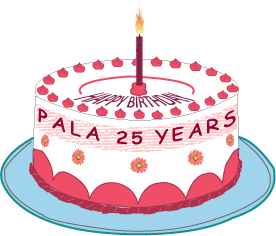 |
|
Who Language and Style is for and how it came into being
 A message from Mick Short, the creator of the course, July 2005 A message from Mick Short, the creator of the course, July 2005
This is an introductory course in what I, and many others call Stylistic
Analysis (no-one has found an entirely satisfactory name for this area
of study, and it is sometimes called Literary Linguistics, Critical Linguistics,
Linguistic Poetics or other similar names by other scholars). Stylistic
Analysis focuses on how people understand texts when they read them,
in particular (but not exclusively) literary texts. The aim of the course
is to help people begin to be able to do Stylistic Analysis well, and
to want to continue to study it. It is offered, free, to any student
interested in learning how to do Stylistic Analysis or any teacher who
wants to use it to teach students Stylistic Analysis. In particular,
it is offered as a birthday present to the members of the Poetics
and Linguistics Association on the occasion of its annual
conference (this year in Huddersfield
University) in its 25th year.
!!!!!!!!!!!!!!!!!HAPPY
BIRTHDAY PALA!!!!!!!!!!!!!!!!!!

For teachers who may want to make use of the site we are currently working
on a website which will provide advice and useful materials. We hope
to have this available by the end of September 2005. If you need to use
the course before then and want advice etc, please email m.short@lancs.ac.uk
If you are student who is trying to learn from the course, I hope that
you find it helpful and enjoyable. We have certainly worked hard to make
it fun, or as much fun as a serious academic course can be! I also hope
that it helps you to read texts with more precision, and so appreciate
them better.
Please note that you may need to install some specialist software to
run some of the materials on this site. The software is free, and you
will be given prompts to download it on to your computer as and when
when you need it.
This web-based version of Language and Style grew out of a traditional
course of the same name, offered to first year English Language students
at Lancaster University, UK. The course is still provided within Part
I English Language as part of the offerings of the Department
of Linguistics and English Language at Lancaster University.
Please note that the link to the Chat Café on the contents page
and all of the other pages of this web course only applies to Lancaster
University students in the year they are studying on Ling 131, Language
and Style. Teachers using this course might find it helpful to create
their own local discussion site for their students. Our site, besides
providing a place for staff and students to discuss matters related to
the course, also gives other useful things for our students to use (e.g.
links to articles, examples of good essays, previous examination papers
and the course handbook).
The funding to create this web-based version of Language and Style came
mainly from a UK National Teaching Fellowship prize that I won in 2000.
As this was a personal prize coming out of the public purse (provided
through the Institute for Learning and Teaching by the Higher Education
Funding Council) I felt, and continue to feel, that it should be made
freely available to all, to encourage work in Stylistic Analysis.
I decided to create a web-based version of the course in order to compare
student reactions to, and performance in, web-based and traditional versions
of the course. The investigation, which took place in Lancaster and in
other higher education institutions in the UK and elsewhere, has recently
been completed. Articles about the investigation and a special issue
of the journal Language and Literature devoted to the course, to be published
in 2006, are currently in print or being prepared. Below I give a brief
bibliography of articles about the course that have already been produced.
References
Breen, M.P and M. Short (1988) 'Alternative Approaches in Teaching
Stylistics to Beginners' Parlance 1, 2, 29-48.
Short, M (1993) 'Stylistics Upside Down: Using Stylistics in the Teaching
of Language and Literature', Textus VI, 3-30 (reprinted in R. Carter
and J. McRae (1996) Language, Literature and the Learner, Longman, 41-64).
McIntyre, D. (2003) 'Foregrounding foregrounding: reflections on foregrounding
theory as a teaching methodology in a lecture course on stylistics',
Style 37, 1: 1-13.
Short, M. and D. Archer (2002) 'Investigating
the Effectiveness of WWW-based Stylistics Teaching', CUE Newsletter.
Short, M. and D. Archer (2003) 'Designing a Worldwide Web-Based Stylistics
Course and Investigating its Effectiveness' Style 37, 1: 27-46.
Short, M. and MP Breen (1988) 'Innovations in the Teaching of Literature
(1): Putting Stylistics in its Place', Critical Quarterly 30, 2, 1, 1-8.
Short, M. (forthcoming 2006) ‘Designing
and piloting a world-wide-web-based stylistics course’ in ‘Andrea Gerbig and Anja Müller-Wood
(eds.) Rethinking English: Reconciling Literature, Linguistics and
Cultural Studies (Lampeter: Edwin Mellen)
|

